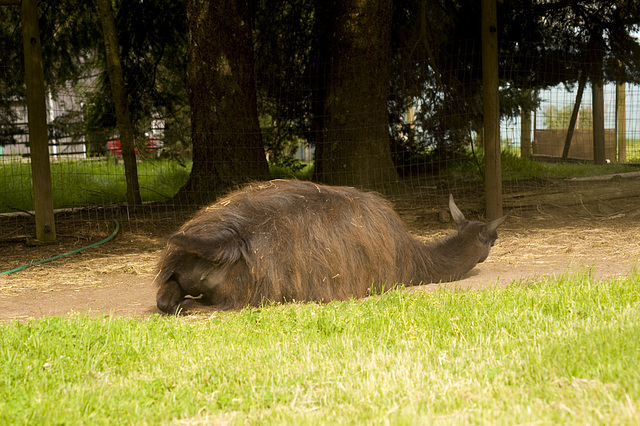Lost Creek Ranger Gaiya
Bouncing baby llamas!
Lost Creek Elahn
New kid on the block (er, farm)
Tuckered
Baby sandwich
Size difference!
New kid, "old" kids
MOM!
Hi! Can we do something together?
She's got me coming and going ...
Lost Creek Sagehopper
Ewww ... what's tickling my nose?
Submissive or "slinking"
Slinking ... the same, but different
Like mother, like daughter
Lost Creek Ranger Gaiya
Setting the stage ...
Lost Creek Sagehopper and Rocky Mountain Dazzle
A mutual clash of desires
Update from Elahn!
Update from Elahn!
Update from Elahn!
If it itches, scratch it
Curious, but cautious
Lost Creek Elahn
Lost Creek Elahn
Lost Creek Ranger Gaiya, four weeks old
Gaiya has a nice butt, too ...
Gaiya, always on the go!
Long shadows on short grass
A tense conversation
Lost Creek Ranger Tokatee
Lost Creek Saucony
Eagles Nest Graehawke
Peanut, denuded
Lost Creek Teewinot
Lost Creek Ranger Ceilidh
Elahn, backlit
Lost Creek Elahn
Nice butt!
Clicker trained ...
Cappuccino gets a scritchin'
Lost Creek Ranger Gaiya, three weeks old
Lost Creek Elahn
Keywords
Authorizations, license
-
Visible by: Everyone -
All rights reserved
-
184 visits
Roll, roll, roll your llama!


Demonstration by Lost Creek Ranger Ceilidh.
Llamas like to roll in dry, dusty spots (watch out when finding those on the trail!), and will enlarge any promising site in their pastures. Rolling is primarily driven by "itchiness" (llamas who itch more, whether due to personal sensitivity or actual parasitization, roll a lot more). Aside from that, as with horses, rolling also serves to unweight the spine and allow slightly displaced vertebrae an opportunity to self-correct.
That long neck is used as both a lever and a counterweight in the process; the tail also participates (see the sixth photo in particular) but doesn't really accomplish anything. :-)
Llamas like to roll in dry, dusty spots (watch out when finding those on the trail!), and will enlarge any promising site in their pastures. Rolling is primarily driven by "itchiness" (llamas who itch more, whether due to personal sensitivity or actual parasitization, roll a lot more). Aside from that, as with horses, rolling also serves to unweight the spine and allow slightly displaced vertebrae an opportunity to self-correct.
That long neck is used as both a lever and a counterweight in the process; the tail also participates (see the sixth photo in particular) but doesn't really accomplish anything. :-)
- Keyboard shortcuts:
Jump to top
RSS feed- Latest comments - Subscribe to the comment feeds of this photo
- ipernity © 2007-2024
- Help & Contact
|
Club news
|
About ipernity
|
History |
ipernity Club & Prices |
Guide of good conduct
Donate | Group guidelines | Privacy policy | Terms of use | Statutes | In memoria -
Facebook
Twitter

Eventually the laws of physics prevail, and the whole body tips one way or the other. An artful roller controls the amount of force and balance to delay this as much as possible, as well as choosing which side to flop on.
To prepare for the next scratch, the neck goes back ...
(Note — this photo has an excellent view of the short, slick-haired section on the underside of all Classic llamas. Woolly llamas have a much smaller area of shorter hair, and even that, although lacking undercoat, is longer than on Classic llamas. The thinned-to-near-bare area around Ceilidh's udder is because she is nursing, and will not remain that way.)
And a little scrubbin' on this side, too ...
There, now she's "gotten a run at it", as it were.
This is the hard part. The ligaments on the back of the neck are super-strong, and require a lot of strength to counter. Throwing the neck "down" (toward the forelegs) with enough force to roll the body again (in either direction) can take several tries. Eventually, older llamas (22.5 years+) lose so much strength that they can't roll upright and get stuck on their sides. :-(
Quickly now! Throwing her neck as far towards her feet as possible until hitting the tipping point, then REAL FAST she'll have to tuck all her legs under ...
Success! Back upright, itch scratched, and re-decorated with vegetation (which the llamas actually don't care about, although it sure does make us PICKY primates lose our composure).
[Disclaimer — the preceding demonstration was performed by a highly trained professional. Do not try this at home. :-P ]
Sign-in to write a comment.